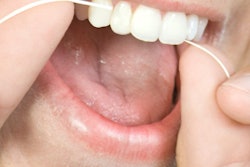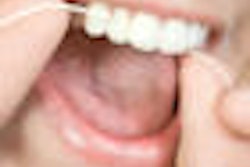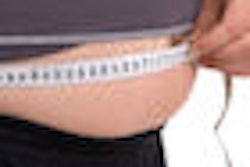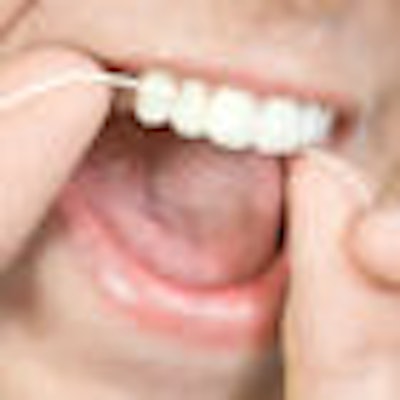
Johnson & Johnson this month released studies the company says indicate that its new Reach Ultraclean floss removes more plaque than competing Glide and Oral-B products.
The new floss, which Johnson & Johnson released in August 2008, is as strong as Glide but more effective, said Sylvia Santos, R.D.H., M.S., associate director of oral healthcare research and development at Johnson & Johnson.
William Landrigan, manager of scientific relations for Procter & Gamble, said he couldn't comment on the research. "I'm not familiar with it," he said. "Clearly Glide is an effective floss." He estimated that Glide and Oral-B flosses together have more than 20% of the floss market.
Like Glide products, which are made of Gore-Tex, Reach Ultraclean is made of a single strand of material. Many other flosses are made of several smaller strands, Santos said.
"Monofilament flosses tend to slide easily and do not shred or break easily," she said in presenting the research at the recent International Association for Dental Research (IADR) meeting in Miami. "The multifilament floss, however, cleans well but is prone to shredding. It would be great if you could have a product that has all of the desirable features of a floss -- that it is easy to use, it's comfortable on the gums, it's shred-resistant, and cleans efficiently -- because our big challenge as clinicians is to get patients to use a product that is difficult to use."
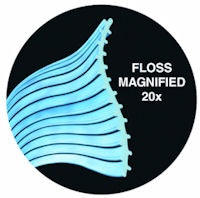 |
| Reach Ultraclean floss has 11 microgrooves on each side of each strand. Image courtesy of Johnson & Johnson. |
Santos said Ultraclean cleans better because it has 11 microgrooves on each side of each strand. "It grabs it [the plaque] almost like a squeegee," she said.
As proof, Santos presented data from four studies conducted by Johnson & Johnson. In each, observers measured the plaque next to the proximal surfaces of 30 or 40 adults who had gone for 18 to 24 hours without cleaning their teeth.
The patients were randomly assigned to use one of three flosses. Observers who didn't know which floss was used measured the plaque next to the proximal surfaces of the patients' teeth. The experiment was then repeated with the hygienists using a different floss until all the patients had been flossed with all three flosses.
The researchers pitted Reach Ultraclean against Crest Glide Original Mint and Oral-B Satinfloss in two of the studies. They compared it to Crest Glide Deep Clean and Crest Glide Whitening Plus Scope in the third, and to Crest Glide Comfort Plus and Crest Glide Shred Guard in the fourth.
The observers scored the patients according to the proximal/marginal index, measuring how much plaque was left compared to how much the patients had before flossing.
In each study, Reach Ultraclean removed significantly more plaque than the competing brands, Santos said. The mean plaque removal for Ultraclean ranged from 1.25 to 1.71, while it ranged from 0.49 to 0.83 for the other products. The difference between Ultraclean and its competitors was statistically significant (p < 0.001).
More comfortable?
Santos said her team also surveyed customers about which floss they liked better. "We actually tested it in consumers who were Glide users," she said. "They liked the Ultraclean floss better than Crest Glide. They found it to be effective in cleaning between the teeth and comfortable in holding and actually being able to control the floss. It's kind of elastomeric so it stretches a little bit, so you don't typically get purple fingers after trying to manipulate the floss through the mouth."
The floss market has taken a new direction since 1992 when Gore invented Glide using the same material used in its well-known waterproof fabric. The floss gradually gained popularity because it slips easily into tight interproximal spaces without breaking. Gore sold the brand to Procter & Gamble in 2003 but continues to manufacture the floss.
The material used to make Reach Ultraclean floss is a trade secret, Santos said. Johnson & Johnson is also marketing a Reach Ultraclean toothbrush. At the same meeting, Santos presented a study suggesting that the brush removes significantly more plaque and gingivitis than the Colgate 360 toothbrush.
Responding to a question after her presentation, Santos acknowledged that the proximal/marginal index used in her research doesn't actually measure plaque on proximal surfaces because this plaque is so hard to see. That plaque can be tested through protein assays, however, she said. "We have done that work, and it resembles what you see here."
She added that the company is now working on studies to see whether patients using Ultraclean have less gingivitis. "Stay tuned," she said.
Copyright © 2009 DrBicuspid.com




